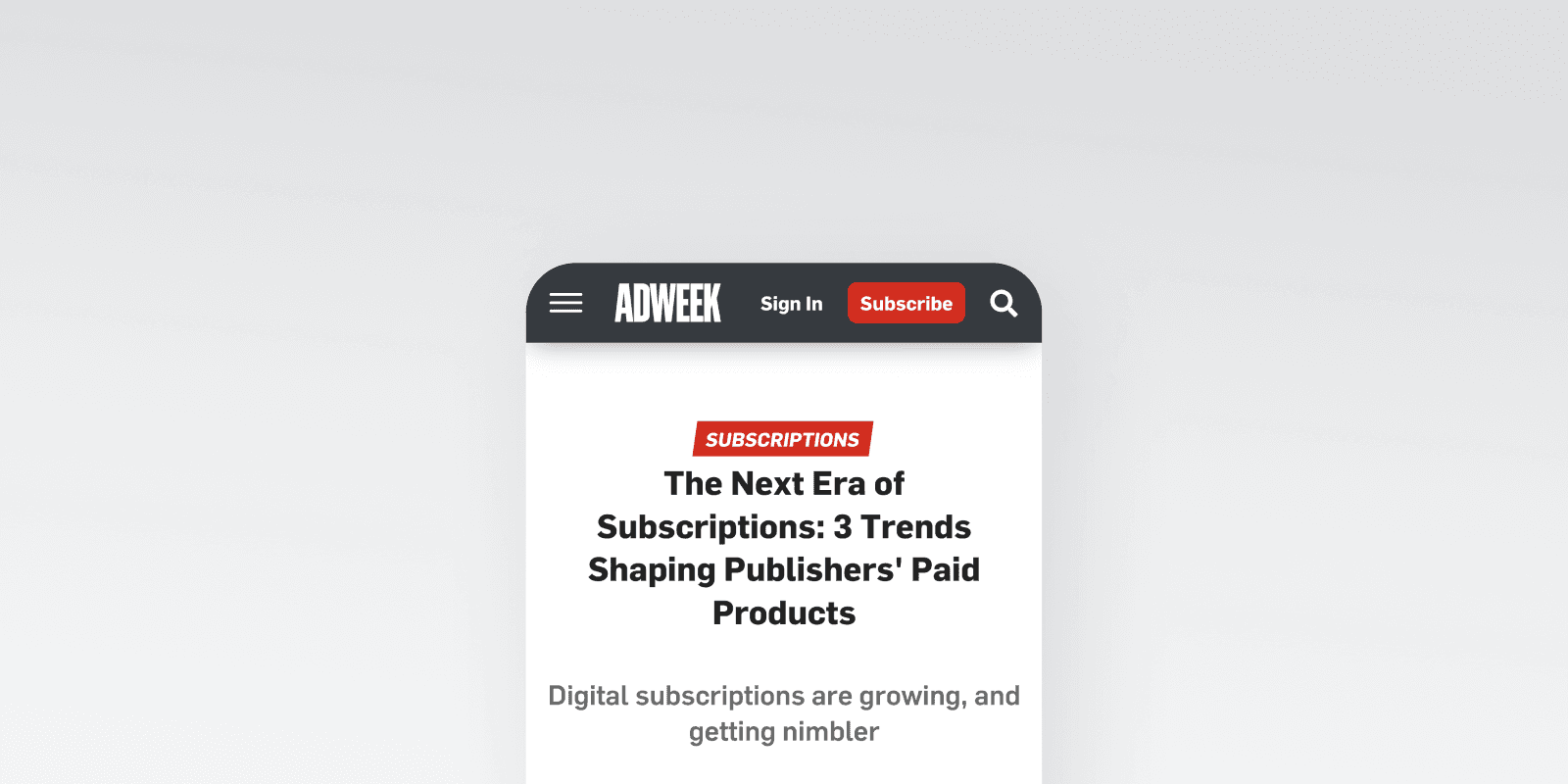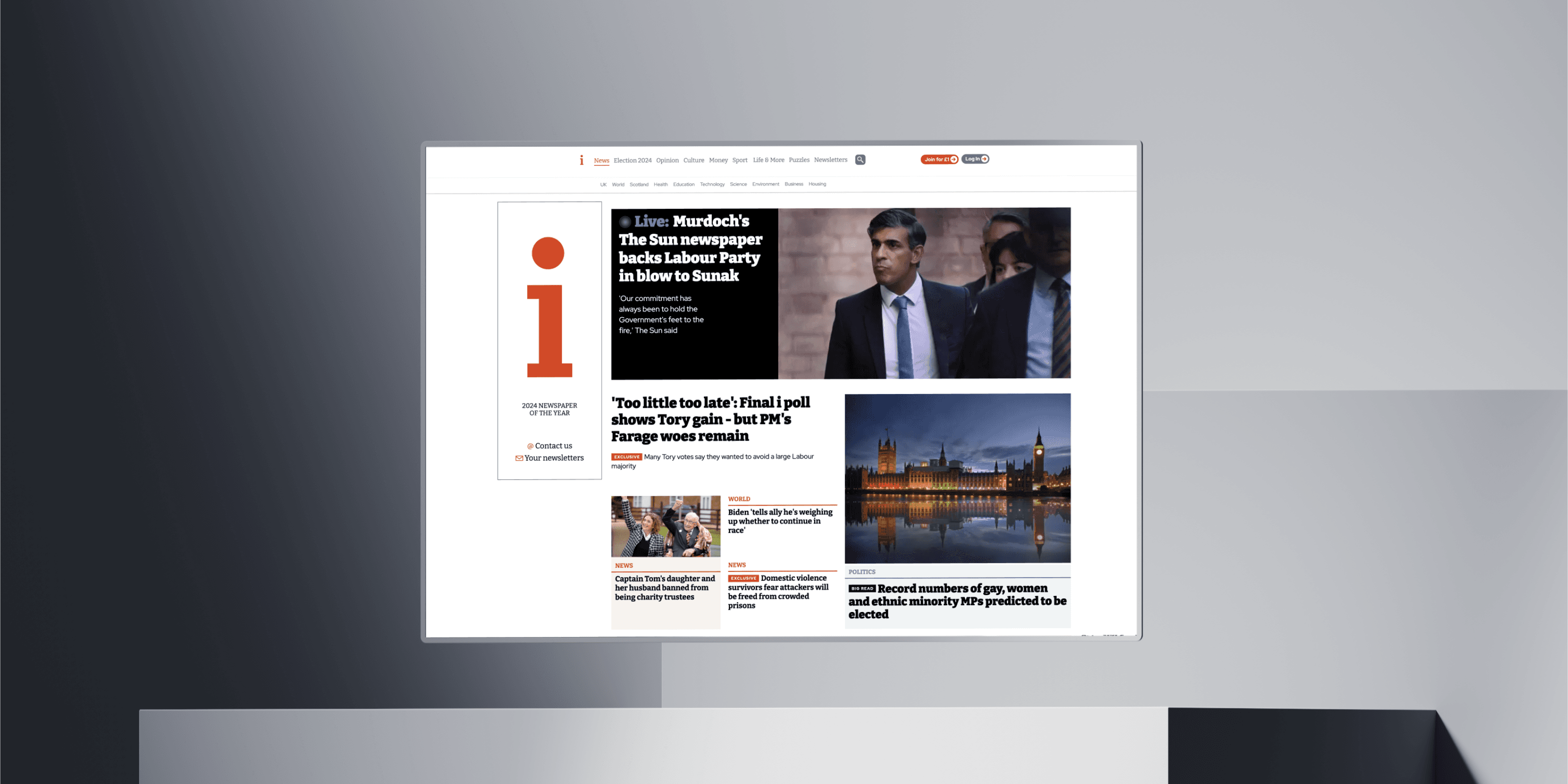
Unlocking Total Revenue Optimization in Eastern European News Media

October 4, 2024

Blick (Ringier Media Switzerland) retains 7% of subscriber cancellations using Piano’s active churn prevention

October 2, 2024

Achieving data excellence: transforming data into your competitive advantage

July 2, 2024

Power media revenue and retention with renewal strategies

May 28, 2024

The state of publisher revenue: Pathways to total revenue optimization in 2024

May 21, 2024

Integrating Insights and Mastering Data Unification with Analytics

May 14, 2024

The state of publisher revenue | Pathways to total revenue optimization in 2024

April 15, 2024

Inside The BBC’s analytics: Delivering growth with a data-driven marketing strategy

March 28, 2024

Ad Revenue Insights: How Piano's dynamic paywall optimizes for total revenue

March 26, 2024

Maximizing data collaboration: An introduction to Workspaces

March 20, 2024

Three marketing strategies for a world without third-party-cookies

February 29, 2024

Navigating Rabobank's Technical Migration to Piano Analytics

February 26, 2024

How publishers are discovering new ways to understand ad revenue

February 21, 2024

Unlocking the power of analytics while maintaining data privacy

February 21, 2024

Piano featured in AdWeek on subscription growth and innovation

February 15, 2024
Introducing Contextual Targeting for Enhanced Advertising Precision
February 13, 2024

The Future of Digital Ads: Embracing Contextual Targeting with Piano's Innovative Approach

February 13, 2024

Optimizing Total Revenue at iNews with Piano’s Ad Revenue Insights and Dynamic Paywall

February 8, 2024

Shell Recharge's Migration to Piano Analytics: Sharing Best Practices

January 30, 2024

Lessons From The Kyiv Independent On Launching – And Scaling – During A Crisis

January 24, 2024

The Future of Marketing in 2024: 7 Tech Trends to Watch

January 17, 2024

Piano Academy 2023 Unplugged

December 20, 2023

How publishers are turning conversions into loyal subscribers and reducing churn

December 5, 2023

Extended opt-out restores visibility into your website traffic activity

December 4, 2023
Load more

Unlocking Total Revenue Optimization in Eastern European News Media

October 4, 2024

Blick (Ringier Media Switzerland) retains 7% of subscriber cancellations using Piano’s active churn prevention

October 2, 2024

Achieving data excellence: transforming data into your competitive advantage

July 2, 2024

Power media revenue and retention with renewal strategies

May 28, 2024

The state of publisher revenue: Pathways to total revenue optimization in 2024

May 21, 2024

Integrating Insights and Mastering Data Unification with Analytics

May 14, 2024

The state of publisher revenue | Pathways to total revenue optimization in 2024

April 15, 2024

Inside The BBC’s analytics: Delivering growth with a data-driven marketing strategy

March 28, 2024

Ad Revenue Insights: How Piano's dynamic paywall optimizes for total revenue

March 26, 2024

Maximizing data collaboration: An introduction to Workspaces

March 20, 2024

Three marketing strategies for a world without third-party-cookies

February 29, 2024

Navigating Rabobank's Technical Migration to Piano Analytics

February 26, 2024

How publishers are discovering new ways to understand ad revenue

February 21, 2024

Unlocking the power of analytics while maintaining data privacy

February 21, 2024

Piano featured in AdWeek on subscription growth and innovation

February 15, 2024
Introducing Contextual Targeting for Enhanced Advertising Precision
February 13, 2024

The Future of Digital Ads: Embracing Contextual Targeting with Piano's Innovative Approach

February 13, 2024

Optimizing Total Revenue at iNews with Piano’s Ad Revenue Insights and Dynamic Paywall

February 8, 2024

Shell Recharge's Migration to Piano Analytics: Sharing Best Practices

January 30, 2024

Lessons From The Kyiv Independent On Launching – And Scaling – During A Crisis

January 24, 2024

The Future of Marketing in 2024: 7 Tech Trends to Watch

January 17, 2024

Piano Academy 2023 Unplugged

December 20, 2023

How publishers are turning conversions into loyal subscribers and reducing churn

December 5, 2023

Extended opt-out restores visibility into your website traffic activity

December 4, 2023
Load more

Unlocking Total Revenue Optimization in Eastern European News Media

October 4, 2024

Blick (Ringier Media Switzerland) retains 7% of subscriber cancellations using Piano’s active churn prevention

October 2, 2024

Achieving data excellence: transforming data into your competitive advantage

July 2, 2024

Power media revenue and retention with renewal strategies

May 28, 2024

The state of publisher revenue: Pathways to total revenue optimization in 2024

May 21, 2024

Integrating Insights and Mastering Data Unification with Analytics

May 14, 2024

The state of publisher revenue | Pathways to total revenue optimization in 2024

April 15, 2024

Inside The BBC’s analytics: Delivering growth with a data-driven marketing strategy

March 28, 2024

Ad Revenue Insights: How Piano's dynamic paywall optimizes for total revenue

March 26, 2024

Maximizing data collaboration: An introduction to Workspaces

March 20, 2024

Three marketing strategies for a world without third-party-cookies

February 29, 2024

Navigating Rabobank's Technical Migration to Piano Analytics

February 26, 2024

How publishers are discovering new ways to understand ad revenue

February 21, 2024

Unlocking the power of analytics while maintaining data privacy

February 21, 2024

Piano featured in AdWeek on subscription growth and innovation

February 15, 2024
Introducing Contextual Targeting for Enhanced Advertising Precision
February 13, 2024

The Future of Digital Ads: Embracing Contextual Targeting with Piano's Innovative Approach

February 13, 2024

Optimizing Total Revenue at iNews with Piano’s Ad Revenue Insights and Dynamic Paywall

February 8, 2024

Shell Recharge's Migration to Piano Analytics: Sharing Best Practices

January 30, 2024

Lessons From The Kyiv Independent On Launching – And Scaling – During A Crisis

January 24, 2024

The Future of Marketing in 2024: 7 Tech Trends to Watch

January 17, 2024

Piano Academy 2023 Unplugged

December 20, 2023

How publishers are turning conversions into loyal subscribers and reducing churn

December 5, 2023

Extended opt-out restores visibility into your website traffic activity

December 4, 2023
Load more

Unlocking Total Revenue Optimization in Eastern European News Media

October 4, 2024

Blick (Ringier Media Switzerland) retains 7% of subscriber cancellations using Piano’s active churn prevention

October 2, 2024

Achieving data excellence: transforming data into your competitive advantage

July 2, 2024

Power media revenue and retention with renewal strategies

May 28, 2024

The state of publisher revenue: Pathways to total revenue optimization in 2024

May 21, 2024

Integrating Insights and Mastering Data Unification with Analytics

May 14, 2024

The state of publisher revenue | Pathways to total revenue optimization in 2024

April 15, 2024

Inside The BBC’s analytics: Delivering growth with a data-driven marketing strategy

March 28, 2024

Ad Revenue Insights: How Piano's dynamic paywall optimizes for total revenue

March 26, 2024

Maximizing data collaboration: An introduction to Workspaces

March 20, 2024

Three marketing strategies for a world without third-party-cookies

February 29, 2024

Navigating Rabobank's Technical Migration to Piano Analytics

February 26, 2024

How publishers are discovering new ways to understand ad revenue

February 21, 2024

Unlocking the power of analytics while maintaining data privacy

February 21, 2024

Piano featured in AdWeek on subscription growth and innovation

February 15, 2024
Introducing Contextual Targeting for Enhanced Advertising Precision
February 13, 2024

The Future of Digital Ads: Embracing Contextual Targeting with Piano's Innovative Approach

February 13, 2024

Optimizing Total Revenue at iNews with Piano’s Ad Revenue Insights and Dynamic Paywall

February 8, 2024

Shell Recharge's Migration to Piano Analytics: Sharing Best Practices

January 30, 2024

Lessons From The Kyiv Independent On Launching – And Scaling – During A Crisis

January 24, 2024

The Future of Marketing in 2024: 7 Tech Trends to Watch

January 17, 2024

Piano Academy 2023 Unplugged

December 20, 2023

How publishers are turning conversions into loyal subscribers and reducing churn

December 5, 2023

Extended opt-out restores visibility into your website traffic activity

December 4, 2023
Load more